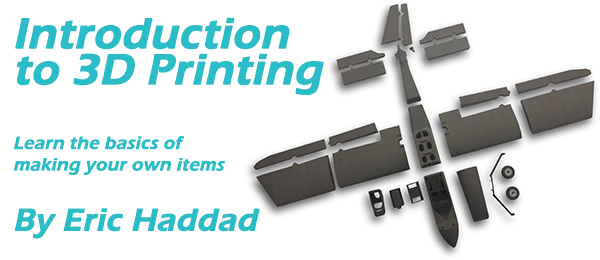3D Printing By Don Slusarczyk | [email protected] As seen in the July 2024 issue of Model Aviation. IN MY PREVIOUS COLUMN, I mentioned that I would provide some helpful tips for getting your 3D printer up and running. Here are the first steps that I take when I get a new one.
Bed Leveling
Older printers had manual knobs to physically move the print bed, but all modern 3D printers have an automatic bed-leveling feature built into their firmware. With automatic leveling, the bed does not actually move. It is fixed to the printer, but a sensor measures all of the variations and dips in the bed, and then it uses that information to compensate when printing the first layer. If one corner happens to be a little lower than the rest of the bed, the printer knows this and lowers the print head in that area to compensate. My Sovol SV06 and SV06 Plus printers preheat the beds to 40°C and the nozzles to 120°C before they level. This allows for thermal expansion of the parts. If your printer does not preheat, I suggest doing so manually. When it reaches the temperature, the automatic leveling process begins, and it only takes a few minutes for the printer to move from point to point to measure the bed. Once this is completed, that data needs to be stored in the printer’s memory. The touchscreen usually has a menu function for saving this information. If it is not saved, it will not compensate, and that can lead to issues with the first layer printing incorrectly.Z Offset
This is the gap between the end of the nozzle and the build plate. The nozzle needs to be close to the build plate but not too close and not too far. To adjust this, slide a sheet of paper between the nozzle and the build plate, and then change the value of the Z offset until the paper just starts to drag on the nozzle when you move the paper back and forth.Image

E-Steps
This test is to check whether the extruder is feeding the correct amount of filament. When you are 3D-printing an airplane, having correctly calibrated E-steps is important because it has a direct effect on print quality, wall thickness, and the weight of the parts.Image

Extruder Spring Tension Knob
One other item I want to talk about is the spring tension knob on the extruder. The extruder will have a spring-loaded lever that puts tension on the filament so that the gears inside the extruder can grab and feed the filament. Too little tension and the filament can slip; too much tension and it can cause binding issues in the gears.Image

Image

The best method I have found to adjust the tension is to feed some filament through the extruder, and then, while it is feeding, lightly grab the filament above the extruder with my fingers and see whether the filament slips or keeps pulling. I adjust the knob so that it has enough pull to keep feeding when I squeeze it. I then use a paint marker and place a dot on the knob. If I need to adjust it, I then have a starting reference point.
The springs that are used are fairly stiff, so a small adjustment makes a big difference in the tension. When I print rubber, I find that the tension knob needs to be reduced by one half turn because the rubber is soft. Having that mark means that I can then go right back to the previous position when I switch back to printing plastic.
SOURCES:
Sovol
www.sovol3d.com










Comments
Add new comment